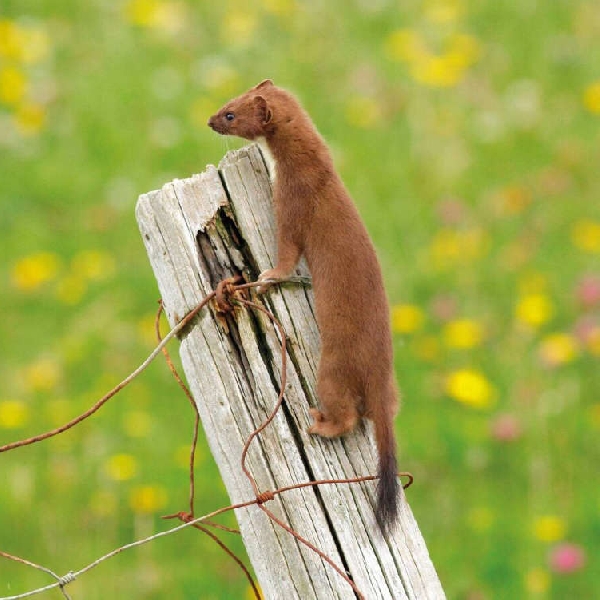
According to findings from Vincent Wildlife Trust, 12 stoats have been seen in Kildare, with the county's habitat being suitable for the unique subspecies
Kildare residents are being reminded to participate in the Irish Stoat Citizen Science Survey, which closes its submissions at the end of January.
The two-year project was launched in February 2023, and is led by the Vincent Wildlife Trust (VWT) in collaboration with the National Biodiversity Data Centre, the University of Galway, and the Centre for Environmental Data and Recording.
It aims to cover the insights of the Irish stoat and establish baseline data to guide future research of the unique species, that is only found in Ireland and the Isle of Man.
The Irish stoat is protected by law here in Ireland.
Their small size, speed and elusiveness has made them a species that little is known about, and are difficult to monitor.
Since its launch, nearly 800 sightings have been verified across Ireland.
The survey has also confirmed that 12 of these sightings were in Kildare.
It was also found that Kildare's habitat is a suitable one for the Irish stoat, which is why the VWT are urging Kildare residents to take part in the survey.
They can be found darting to stone walls or hedgerows, which are used as protection from predators.
The Irish stoat can be confused for similar small carnivores in the country, such as ferrets, American mink and the pine marten.
What makes the Irish stoat distinctive is its black-tipped tail, which researchers believe may draw away a predator’s attention from more vulnerable areas like the head and neck.
The Irish Stoat Citizen Science Survey ends on January 31st.
To submit sightings of an Irish stoat, dead or alive, visit https://biodiversityireland.ie/surveys/irish-stoat-survey/.
Sightings can also be emailed to irishstoat@vincentwildlifetrust.ie.
During our survey, 747 Irish stoat sightings have been verified across Ireland! Can we reach 800 before the survey ends?
— IrishStoatSurvey (@IrishStoatSurv) November 6, 2024
Submit your sightings before February 2025!
RoI: https://t.co/GV8cgBAu5w
NI: https://t.co/DrCyUUtngW@BioDataCentre @cedar__ni @UlsterWildlife @NPWSIreland pic.twitter.com/DUOs3VHiXz



 Outpouring Of Grief In Kildare Town After Death Of "Gentle Soul" Who Died Following A Serious Assault
Outpouring Of Grief In Kildare Town After Death Of "Gentle Soul" Who Died Following A Serious Assault
 BREAKING: Young Man Dies In Hospital Following Serious Assault In Kildare Town
BREAKING: Young Man Dies In Hospital Following Serious Assault In Kildare Town
 Weekend Rail Disruptions: Bus Transfers For Kildare And Athy Commuters Amid Major Works
Weekend Rail Disruptions: Bus Transfers For Kildare And Athy Commuters Amid Major Works
 Councillor's Proposal To Turn Celbridge Library Into Family Resource Centre Shot Down By Council Officials
Councillor's Proposal To Turn Celbridge Library Into Family Resource Centre Shot Down By Council Officials
 Fresh Hope For Leixlip Main Street As Some Property Owners Begin Clean-Up Of Run-Down Buildings
Fresh Hope For Leixlip Main Street As Some Property Owners Begin Clean-Up Of Run-Down Buildings
 Two Kildare Forests And Woods Make Coillte's Most Visited Recreational Parks List
Two Kildare Forests And Woods Make Coillte's Most Visited Recreational Parks List
 Cannonball’s Naas Finale Helped Drive €781,000 Collection Boost For Jack and Jill
Cannonball’s Naas Finale Helped Drive €781,000 Collection Boost For Jack and Jill
 Proceeds Of Crime Reinvested In Communities As Kildare Secures Share Of €4.4m Fund
Proceeds Of Crime Reinvested In Communities As Kildare Secures Share Of €4.4m Fund


